Stone building - introduction
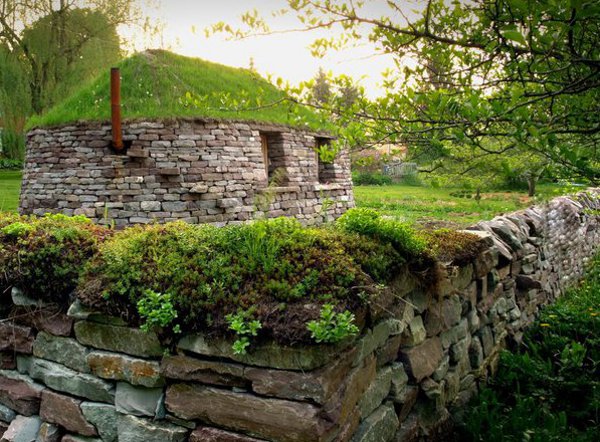
“Stone houses give us the feeling of ‘something that remains unchanged’, which we always look for in this universe!” – Mehmet Murat ildan
Contents
What is stone building?
Stone building or stonemasonry has existed since humans could first make tools to work stone. Stonemasons work rock into the desired, often geometric shapes, and then use the stones to make structures. Whilst some stone work is done ‘dry’, much stonemasonry involves the use of mortars, and the understanding of the crucial relationship between the mortar and the stone. There are three main aspects to the stonemason’s craft: choosing and shaping the stone; the lime process; and the structural work of building in stone.

Repointing a stone wall with lime mortar.
Stonemasonry in the UK survived to the present day largely thanks to its role in conservation of our architectural and ecclesiastical heritage. In colleges, for example in York and Weymouth, ancient skills have been kept alive long after structural stone building and the use of lime mortars has fallen almost entirely from favour in mainstream construction.
We owe then, the continuing and developing tradition of this craft to the modern concern for Britain’s built heritage. However, stonemasonry also has a role to play in sustainable building for the future, as well as perhaps, in the plans of self-builders in some circumstances.

Contemporary stone house.
Most stonemasons these days find work in urban centres, and for big companies that are not specialists in stonemasonry. Outside of this environment, stonemasons need to be adaptable and skilled in more than just building walls in stone. For this introduction, I was lucky enough to talk to Alastair McGowan whose work includes restoration, new build and training; he undertakes lime and stone projects, drystone walling and architectural/ecclesiastical restoration and conservation. These are the main different kinds of modern stonemasonry.
What we’re not talking about is ‘slipform’ stonemasonry, which uses natural stone as facing only, on poured concrete walls.

Various other things, apart from houses, can be built with stone.
What are the benefits of stone building?
The craft of stonemasonry is very different to the industrial approach of the construction industry in which so many bricks laid per hour is the overarching goal. Stonemasonry works with natural materials, and in sympathy with them. Stonemasons talk about the ‘soft principle’ – lime mortar is flexible and the joint is softer than the masonry unit. This gives buildings a resistance and durability that is lost with the use of cement. The flexibility of buildings is a major factor in their ability to survive the test of time; it means that the building can move millimeters without cracking, can settle and shift with the Earth and the people who use it.
Of course, as a craft, stonemasonry is a skill hard won through long study and practice. For those involved in any craft this is clearly an advantage for the people involved. Whilst the phrase to ‘learn a trade’ still has some minimal currency in our society, the understanding of how and why this is an innately good thing for a person has largely been lost – not however amongst those who practice a traditional craft or have acquaintances who do so.
A selection of beautiful old stone cabins
Heritage and traditional skill bursary schemes exist to help the transmission of crafts like stonemasonry.
Stonemasonry creates buildings amenable to long-term repair and maintenance. The creations of stonemasons are built to last for centuries, but they can also be endlessly cared for using the same materials with which they were first built. It is true of course that stonemasonry is time consuming and relatively costly, but the results speak for themselves – rather than buildings that may well be obsolete or unusable within a generation, the works of stonemasons endure.
Stone is the most durable building material, but doesn’t require the energy and pollution involved in the firing of bricks or cement manufacture. Cement mortars and renders should not be used in stone construction, as it sets harder than the stone, which means any moisture in the building will find it easier to escape via the stone than the cement, causing frost and evaporation damage to the stone.

Damage to a stone wall caused by the inappropriate use of cement mortar and render.
What can I do?
Becoming a stonemason is always an option, or at least as long as there is either funding for the heritage skill bursaries or stonemasons willing to train apprentices, but the question I asked Alastair was what the novice might be able to undertake; someone who had perhaps taken a short course and read a good book or two.
If you want to build a stone plinth wall for a bale building or an earth building, then that would be an achievable, as well as a really useful project to undertake. But Alastair’s opinion is that a house would be another matter entirely as a DIY stonemasonry project. The forces at play in a large construction mean that it would always be worth seeking the advice of someone properly trained, and perhaps, even as a self-builder, employing someone to come in and help, or to oversee the work from time to time. When I rebuilt a stone house in France, I drew on the skills of a local man who I employed for a couple of weeks at the start of the project for the most technically challenging part of the job. The house is still standing, although I wish I’d had the money to employ a stonemason throughout the reconstruction of the walls.
Small, stone bothy on the Isle of Lewis, with a wonderful view.
In some places it might actually be easier to get planning permission for a stone building than for any other sort. There are parts of the UK where stone building is the local vernacular, and even places where building or repairing in an appropriate stone is obligatory.
If you buy a stone building of course, then you might as well learn about stonemasonry. You might still need a stonemason to come in to help on more complicated jobs, but it’s always a good idea to understand as much as you can about caring for your own dwelling.
You might buy a pile of stones that was once a house, and be determined to put the place back in the same style. This is one very good way to overcome the problem of sourcing stone. Quarried stone is expensive, and second-hand stone is often hoarded; imported stone is usually pre-finished for specific jobs (and of course for environmental reasons, it’s not a good idea to transport something as heavy as stone over large distances). If you need stone then asking around or talking to local farmers is always a good idea, there are many abandoned quarries and ruins around that might prove to be a good source of material.

Stone is the most durable building material, and there are some extremely old stone buildings still around.
A traditional craft like stonemasonry depends upon a highly specialised toolkit, and trying to work stone with inappropriate tools will lead at the very least to disappointment and frustration, and likely to bruised knuckles or worse as well.
A tungsten-bladed pitcher is used to drive a crack through a stone, a steel hammer to hit it. Nylon mallets and tungsten masonry chisels and points are used to shape the raw material for building. Alastair’s tools mostly come from France, and putting the kit together is an expensive undertaking; the pitcher alone costs around £70.
Stones are heavy and tools can hurt. Health and safety has been of serious concern to stonemasons for thousands of years. Goggles and safety boots must be worn, and the art of safe lifting learned. Few of us will ever have to place stones on spires or tall chimneys, let alone work with Medieval cranes or rope-lashed scaffolding, but stonemasonry remains a craft that must be respected. Tendonitis or a splash of lime mortar in the eye are bad enough, but a stone on the foot, arm or leg can be catastrophic.

A flight of steps being constructed with raw stone and no power tools.
Traditional stonemasonry requires a specific mindset. The lime process itself can take anything from a day to weeks depending on the weather, and finding and preparing stone needs a methodical approach. These are not jobs that can be assaulted. Alastair Mcgowan says that even on a cognitive level trying to sort stone for longer than a few hours in a day can be counter-productive.
So, you can’t work with lime when it’s too hot, or when it’s too cold, and stones need to be carefully selected and prepared. The work demands focus, but also patience. It is in essence the antithesis of industrial work.
Specialist(s)
Thanks to Paul Jennings of Lowimpact.org and Alastair McGowan of McGowan Masonry for information.
The specialist(s) below will respond to queries on this topic. Please comment in the box at the bottom of the page.
 Colin Yates of Conserv is a specialist in stone restoration of historic and listed buildings and lime mortars. He consulted on the rebuilding of the stepped pyramid at Saqqara, Egypt, built in the 27th century BC, as well as on York Minster, Chester Cathedral, Liverpool Metropolitan Cathedral and many more iconic stone buildings.
Colin Yates of Conserv is a specialist in stone restoration of historic and listed buildings and lime mortars. He consulted on the rebuilding of the stepped pyramid at Saqqara, Egypt, built in the 27th century BC, as well as on York Minster, Chester Cathedral, Liverpool Metropolitan Cathedral and many more iconic stone buildings.

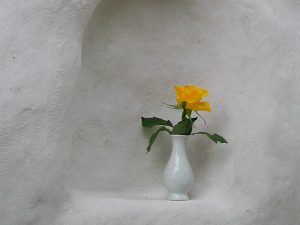
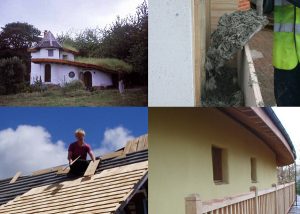
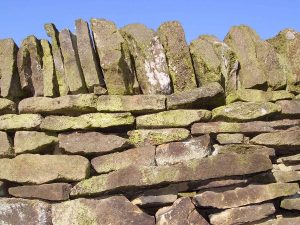

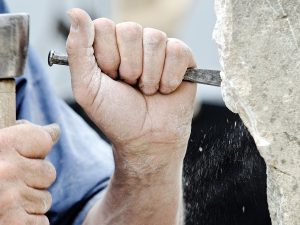
8 Comments
We deliever free stonemasonry ebook, feel free to ask one —–> http://bit.ly/masonry-ebook
Hi. I have a plastered stone house in Bulgaria. In some places the plaster needs repair. I am trying to ascertain whether the plaster could be removed and the stones left “bare”. Could this be done to just the damaged sections or would all if the plaster need removing
Hi Bryony,
It may be possible but much would depend on the current regulations in Bulgaria, particularly fire regulations, assuming it is internal plaster applied to a habitable building.
I’m unsure whether it’s advisable to do this from a technical point of view.
Could you share more details about the work?
a) Approx. when was the house built?
b) Are the walls internal or external?
c) Is it lime plaster or gypsum plaster?
d) How is the plaster applied e.g. directly to stone, laths or plasterboard?
e) When was the plastering work undertaken?
f) Could you describe the nature and extend of the damage?
Best regards,
Colin
Hi Colin,
I recently bought an old quarryman’s cottage. The previous owners renovated the building but there are signs of damp. I’m not bothered because I understand the commitment to a building that is at least 200 years old. I fear that the damp is mainly due to modern materials on an old limestone cottage. I guess that modern cement on the external pointing and modern plastering on the internal walls might be the cause but I’m not an expert and thought I should ask someone who is. Please could you advise me? The damp symptoms are:
Small yellowing patches with cracked patches.
Small dappled black patches.
Condensation patches on the windows.
A damp smell.
Many thanks,
Damien
Hi Damien,
That’s right, at the time these were built with thick solid walls and little to no damp prevention. The walls behave like big sponges, absorbing the moisture from above and below.
However, they were also constructed using lime-based materials (lime mortar, lime plaster, etc.) which are not only breathable, the capillary properties effectively draw moisture out from the surrounding masonry and help to expel it.
This natural cycle is broken when the buildings are repaired and renovated with modern materials (e.g. cement, gypsum) which although cheap, convenient and widely available – are not breathable. As moisture inevitably enters the structure, it cannot escape and tends to build up, manifesting itself eventually as a much larger problem.
The symptoms you describe sound like classic damp signs and a move back to traditional, breathable materials will certainly help to recreate that cycle, removing damp.
It’s also worth investigating the extent and root cause of the damp too as if this is an issue (flooding, broken gutter, broken pipes, etc) then it should definitely be resolved first.
Kind regards,
Colin
Hi.
Could I ask the location of where that old stone Bridge over the stream is.
Thanks.
Hi,
I live in Zambia and considering on building a house with stone. Since the climate conditions are different from the UK, can I use cement instead of lime as mortar?
Hi Kombe,
I’d recommend a lime mortar if you’re building with natural stone, regardless of the climate.
A good mortar should be a little softer than the masonry. Its purpose is to support the masonry units and hold them apart, thus introducing some flexibility into the structure.
Quite often, a cement mortar is too hard which can lead to deterioration of the masonry units.
A suitable lime mortar may need some maintenance over the long term, but it is a more compatible material than a cement mortar.
Kind regards,
Colin